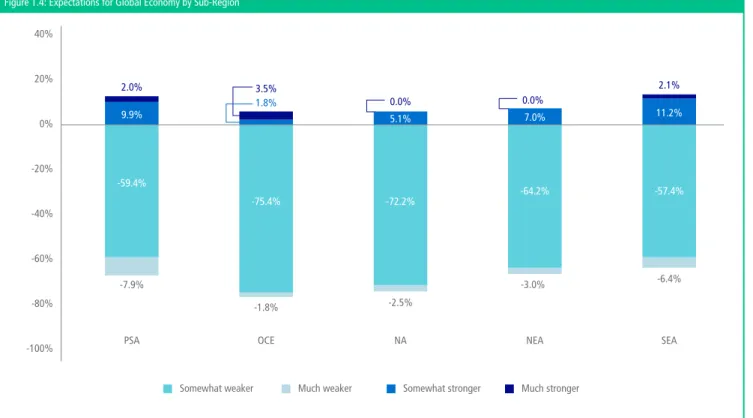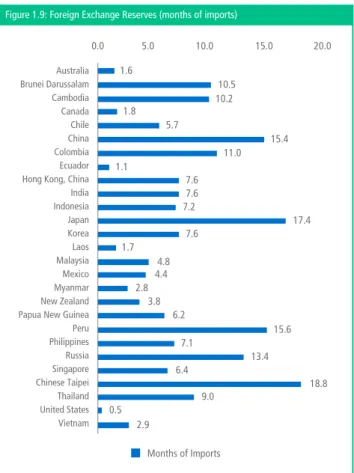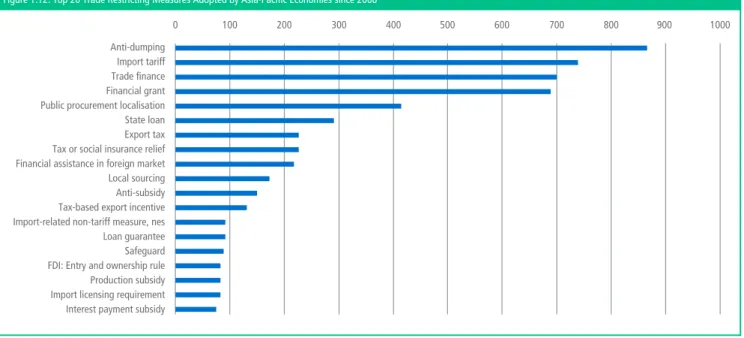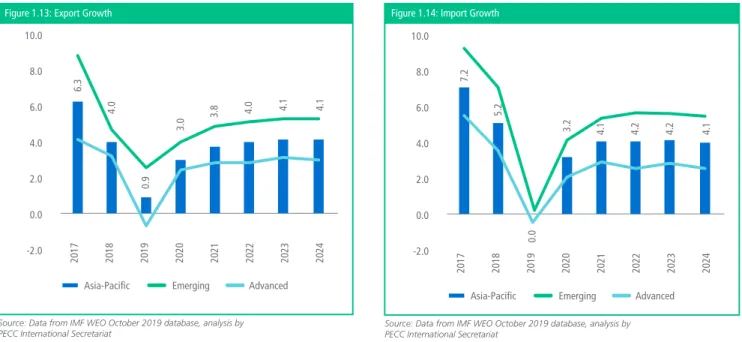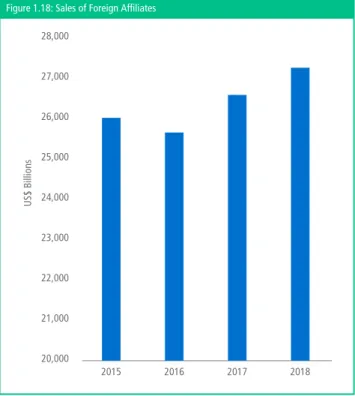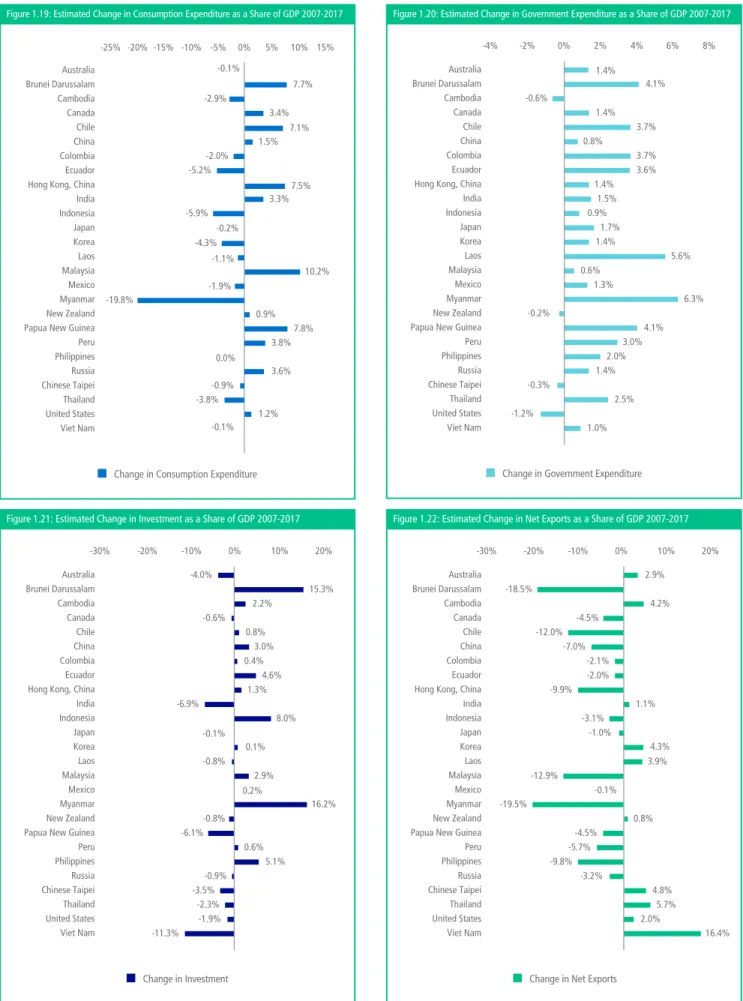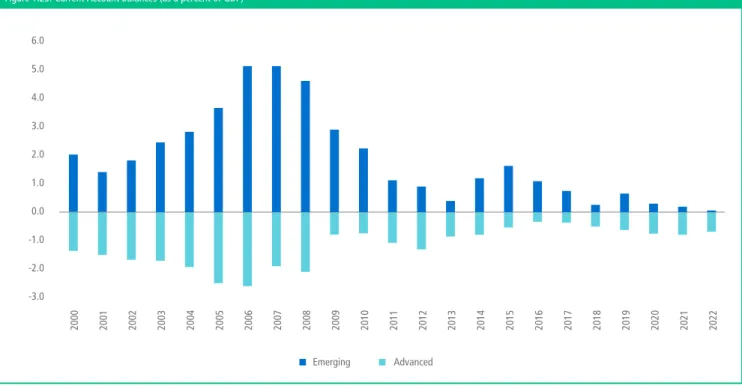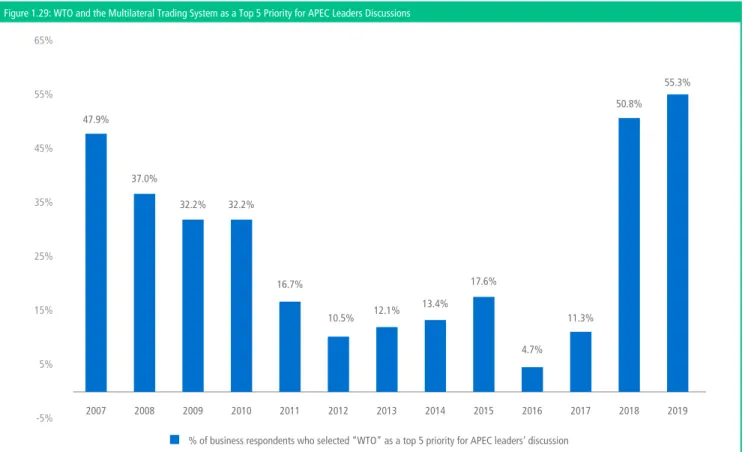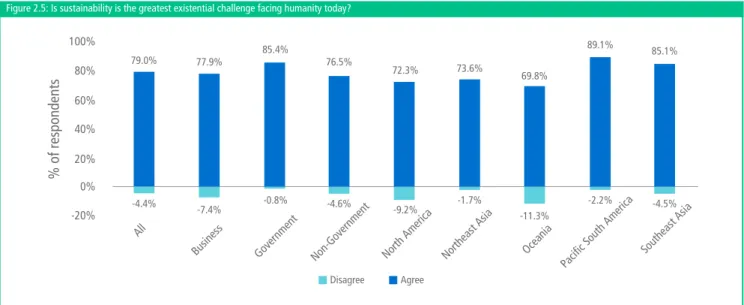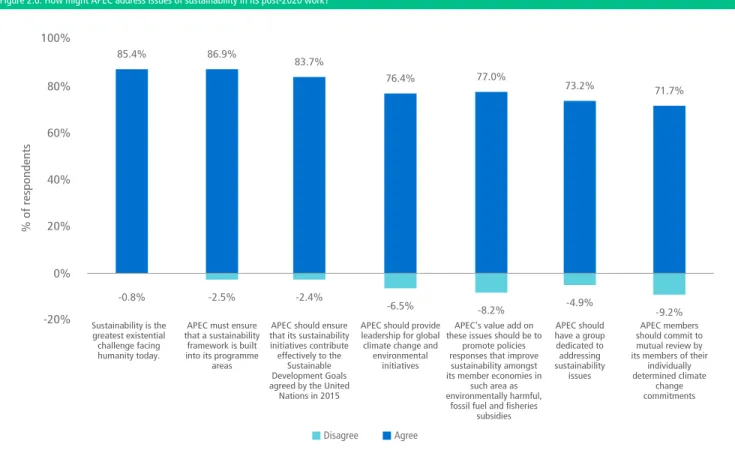The State of the Region report is the product of a task force established by the governing body of PECC. 68 percent of respondents to PECC's annual survey of the political community in the Asia-Pacific region expect weaker or much weaker growth for the global economy next year. Progress towards the Bogor Goals and the Free Trade Area of the Asia-Pacific (FTAAP).
With this in mind, the Standing Committee of the Pacific Economic Cooperation Council (PECC) established a working group to develop the Connectivity Index (Index). As noted in last year's State of the Region report, regional currencies are losing value against the US dollar.
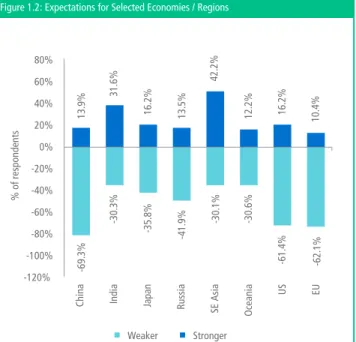
THE ASIA-PACIFIC ECONOMIC OUTLOOK
However, this may be coincidental as a result of US tax reforms in 2017. Source: PECC State of the Region Survey (different years), different language is used for 'climate change' as a priority option for APEC leaders' discussions in the survey. One issue that is reaching a tipping point is the status of the WTO Appellate Body.
It has long been seen as a path to an eventual Asia-Pacific free trade area along with the CPTPP. The Pacific Alliance has long been considered to negotiate a possible agreement with ASEAN.
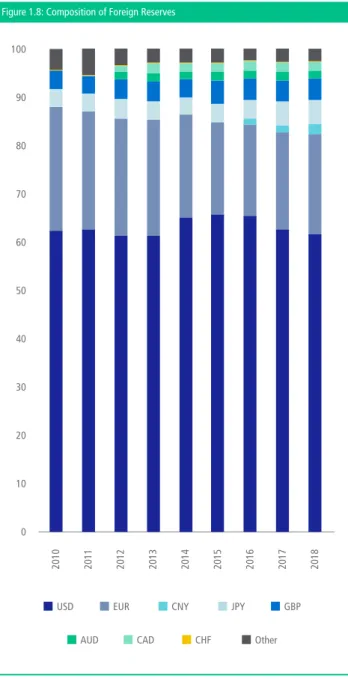
CHAPTER APEC BEYOND 2020
WHAT LIES AHEAD?
APEC BEYOND 2020:WHAT LIES AHEAD?
Turning to specific areas of focus, respondents to the 2019 PECC State of the Region survey were asked to rank each of 10 areas of focus as important to achieving the vision for APEC beyond 2020. This is perhaps symptomatic of the current reality of trade conflicts in region and to some extent the effect of discouragement. An in-depth analysis of the survey results, shown in Figure 2.4, shows differences within the regional political community.
As shown in Figure 2.5, there was broad agreement that APEC should have a sustainability framework and contribute to the achievement of the UN's Sustainable Development Goals. Source: PECC State of the Region Survey 2019 Question: Please indicate the level of agreement or disagreement you have with the following statements about sustainability: APEC members should commit to reviewing their individually determined commitments on climate change by its members. How important do you think each of the following should be to APEC's work on trade after 2020.
Emerging Advanced Everything Figure 2.8: What APEC can do to support the WTO and Multilateral Trading System. Under Scenario 2, the assumption is that 87 percent of the workforce has secondary education while under Scenario 3 only 82 percent. As seen in Figure 2.10, about 20 percent of the working-age population has some form of tertiary education.
To achieve the growth envisaged in scenario 1, it will have to increase significantly to approximately 34 percent of the working-age population. Scenario 2 assumes that only 25 percent of the population has some form of tertiary education, while in scenario 3 the percentage of the workforce with tertiary education actually declines. Please indicate how important each of the following is to the future growth of your economy.
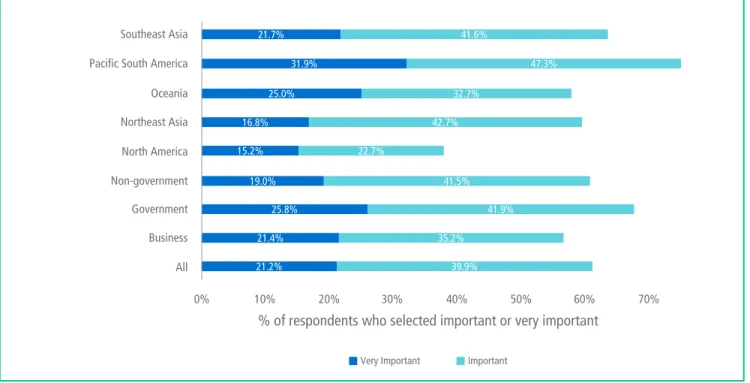
Why is the digital society so transformative for economies and societies?
BOX 1 INTERVIEW WITH ANTHONY VIEL, CEO OF DELOITTE CANADA AND CHILE, AND RICARDO BRIGGS, REGIONAL PARTNER FOR DELOITTE CHILE. What is the digital society and what does it mean for our economies and businesses. We sat down with presenters Anthony Vielo, CEO for Deloitte Canada and Chile, and Ricardo Briggs, Regional Managing Partner for Deloitte Chile, to learn how digital innovation is impacting society at home and abroad.
Are there particular aspects of the digital society that present the greatest opportunities? What are you seeing
What challenges stand in the way?
Question: Please indicate your agreement or disagreement with the following statements: APEC should set a target for a unified Asia-Pacific digital market by 2030 Disagree Agree. Businesses must do more to collect and use quality data, the key enabler of digital technologies. We need to do more to educate the public and each other about what these technologies are and how we can use them.
And we all need to do more to earn and earn the trust of citizens who have legitimate concerns about how these technologies affect their lives. This lack of understanding of digital technologies and how they already affect our lives threatens to undermine our transition to the digital society and the benefits it can bring.
What role do you see for regional cooperation to harness the digital society’s full potential? Where should APEC prioritize as
Enabling the free flow of information and data for the development of the Internet and the digital economy while respecting applicable domestic laws and regulations;. Question: In 2009, APEC members pledged to take concrete steps towards the realization of the Free Trade Area of the Asia-Pacific (FTAAP). What do you think is the best way for his 4 - most desirable 3 2 1 - least desirable Don't know. Completion of ongoing RCEP negotiations and its extension to all APEC members.
A Free Trade Area of the Asia-Pacific (FTAAP) has been an aspirational goal of APEC since leaders agreed in 2009 to realize it by developing and building on ongoing regional commitments. A decade since then, one of the pathways has since been completed – the CPTPP – and the RCEP negotiations are underway. As shown in figure 2.20, the preference of the regional political community is for the final convergence of the different paths.
As shown in Figures 2.21 and 2.22, the Northeast Asian and Southeast Asian respondents tended to prefer "The completion of the ongoing RCEP negotiations and its expansion to include all APEC members", while North Americans tended to prefer the expansion of CPTPP. Question: In 2009, APEC members committed to take concrete steps towards the realization of a Free Trade Area of the Asia-Pacific (FTAAP), what do you think is the best way to achieve this. This positive evaluation of APEC has not been consistent throughout the history of PECC's State of the Region survey.
The two more concrete issues of climate change and technological innovation are closely related to the challenge of the need for a new social contract for all societies in the region. I also believe that APEC should focus more on developing the potential of the digital economy in developing economies through market-based means. Although India is one of the fastest growing economies in the region, APEC members are divided over its membership.
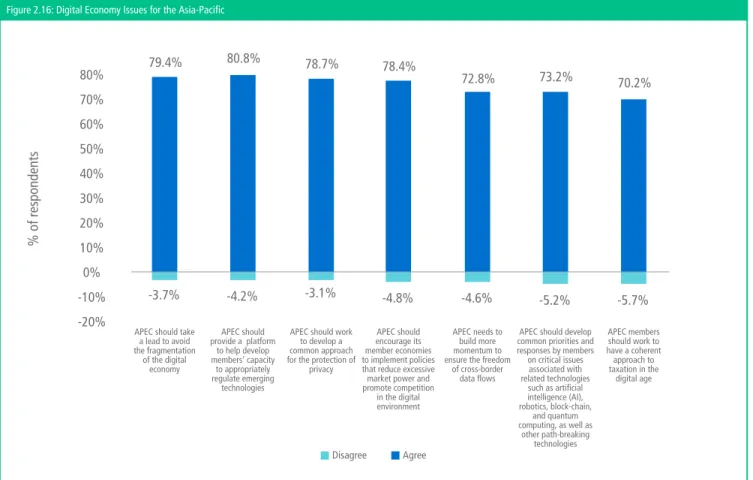
INDEX OF CONNECTIVITY IN THE ASIA-PACIFIC
CHAPTER
INDEX OF CONNECTIVITY IN THE ASIA-PACIFIC
Some of the upper middle-income countries score on par with those in the high-income group in terms of physical connectivity – in addition to those already mentioned, Thailand and Russia also perform well. As shown in Figure 3.3, the economies in this group are generally clustered below the line of best fit, leading to the conclusion that the region's relatively high per capita incomes may bias some of the analysis. The high-income economies showed a high degree of heterogeneity in their respective strengths in the sub-indexes that make up the physical connectivity pillar.
China's and indeed Malaysia's, Russia's and Thailand's scores for the physical pillar were equal to or higher than some in the high-income group. As with the upper-middle-income group, some members of the lower-middle-income group performed as well or better than those in the upper-middle-income group. Compared to its peers in the high-income group, Japan scores below average for trade facilitation, but performs better in other sub-indices, but far outperforms the cohort average in intellectual property receipts.
Institutional connectedness scores in the high-income group ranged from Japan at 81.1 to Chile at 53.3. Unlike physical connectivity, the peak of this group is not the same as that of the high-income group, perhaps indicating a higher degree of elasticity with GNI per capita. Financial Infrastructure Intellectual Property Receipts Institutional Figure 3.11: Institutional Connectivity in the Asia-Pacific Region: Lower Middle Income Economies.
While the Singaporean passport is one of the strongest passports of the bunch, it scores poorly on the number of missions. The aim of this index was to provide an objective basis for assessing the state of connectivity in the Asia-Pacific region. The intention was to really contribute to the ongoing work in the region on connectivity.
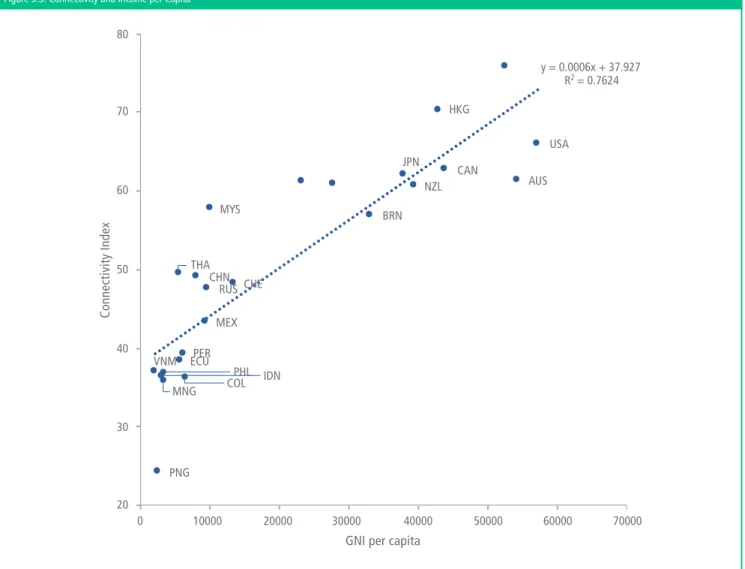
ANNEX
B RESULTS OF ASIA-PACIFIC POLICY COMMUNITY SURVEY
GOVERNMENT
BUSINESS
NON-GOVERNMENT: RESEARCH COMMUNITY/CIVIL SOCIETY/MEDIA
RESPONDENT BREAKDOWN
BREAKDOWN OF RESPONDENTS BY SECTOR
BREAKDOWN OF RESPONDENTS BY SUB-REGION
- What are your expectations for economic growth over the next 12 months compared to the last year for the following economies/regions? Please select/tick the appropriate box
- Further thinking about the future of regional cooperation, how would you rank the importance of the following areas?
- In 1994 in the Bogor declaration, regional leaders set the objective of APEC leading the way in strengthening the open multilateral trading system. They further called for the successful launching of the World Trade Organization (WTO)
- Please indicate your agreement or disagreement with the following statements
- How important do you think each of the following are for APEC to address in order to promote people-oriented economic growth?
- Some argue that maintaining future growth momentum will depend on meaningful structural reforms – as defined by APEC leaders: “institutional frameworks, regulations and government policy so that barriers to market-based
- Please indicate the level of agreement or disagreement that you have with the following statements on sustainability
- Please indicate your level of agreement with the following statements regarding the digital economy
- In 2009 APEC members committed to take concrete steps toward realization of a Free Trade Area of the Asia-Pacific (FTAAP), what do you think is the best way towards its achievement? Please rank each option in order of your preference, with 1 being the
- What should be the priority issues for Asia-Pacific free trade agreements and an eventual Free Trade Area of the Asia-Pacific? Please rate each of the following using a scale of 1-5, with 1 representing a low priority and 5 a high
- What do you think should be the top 5 priorities for APEC Leaders to address at their upcoming meeting in Santiago? Please select ONLY five (5) issues, using a scale of 1-5, please write 1 for the issue you think is most important, 2 for the next most
What are your expectations for economic growth over the next 12 months compared to last year for the following economies/regions. Please write 1 for the most serious risk, 2 for the next most serious risk, 3 for the next third highest risk, 4 for the fourth from 1-5. Please write 1 for the most serious risk, 2 for the next most serious risk, 3 for the next third highest risk, 4 for the fourth highest risk, and 5 for the least serious risk.
As you think further about the future of regional cooperation, how would you rank the importance of the following areas. Policies that will enable all parts of society to take full advantage of the digital economy and other technologies. How important do you think each of the following matters is for APEC to address in order to promote people-oriented economic growth.
In 2009, APEC members committed to take concrete steps towards the realization of a Free Trade Area of the Asia Pacific (FTAAP), which you think is the best way to achieve this. What should be the priority issues for Asia Pacific Free Trade Agreements and an eventual Asia Pacific Free Trade Area. Please rate each of the following using a scale of 1-5, with 1 being a low priority and 5 being a high Asia-Pacific.
Please rate each of the following using a scale of 1-5, with 1 being a low priority and 5 being a high priority. Please select five (5) issues ONLY, using a scale of 1-5, please write 1 for the issue you think is most important, 2 for the next most selected issue ONLY five (5) issues, use a scale of 1 -5, please write 1 for the issue you think is the most important, 2 for the next most important issue, 3 for the third most important, 4 for the fourth most important and 5 for the fifth most important. The implementation of the APEC Roadmap on the Internet and Digital Economy and the APEC Action.
85CANADA
MEMBER COMMITTEES
PECC CO-CHAIRS
BRUNEI DARUSSALAM
CHILE
CHINA
AUSTRALIA
COLOMBIA
HONG KONG, CHINA
JAPAN
INDONESIA
ECUADOR
87KOREA
MEXICO
NEW ZEALAND
MALAYSIA
PHILIPPINES
CHINESE TAIPEI
UNITED STATES
THAILAND
VIETNAM
SINGAPORE
PACIFIC ISLANDS FORUM (PIF)
ASSOCIATE
MEMBERS INSTITUTIONAL MEMBERS
FRANCE (PACIFIC TERRITORIES)
PACIFIC BASIN ECONOMIC COUNCIL (PBEC)
PACIFIC TRADE AND
DEVELOPMENT CONFERENCE (PAFTAD)
